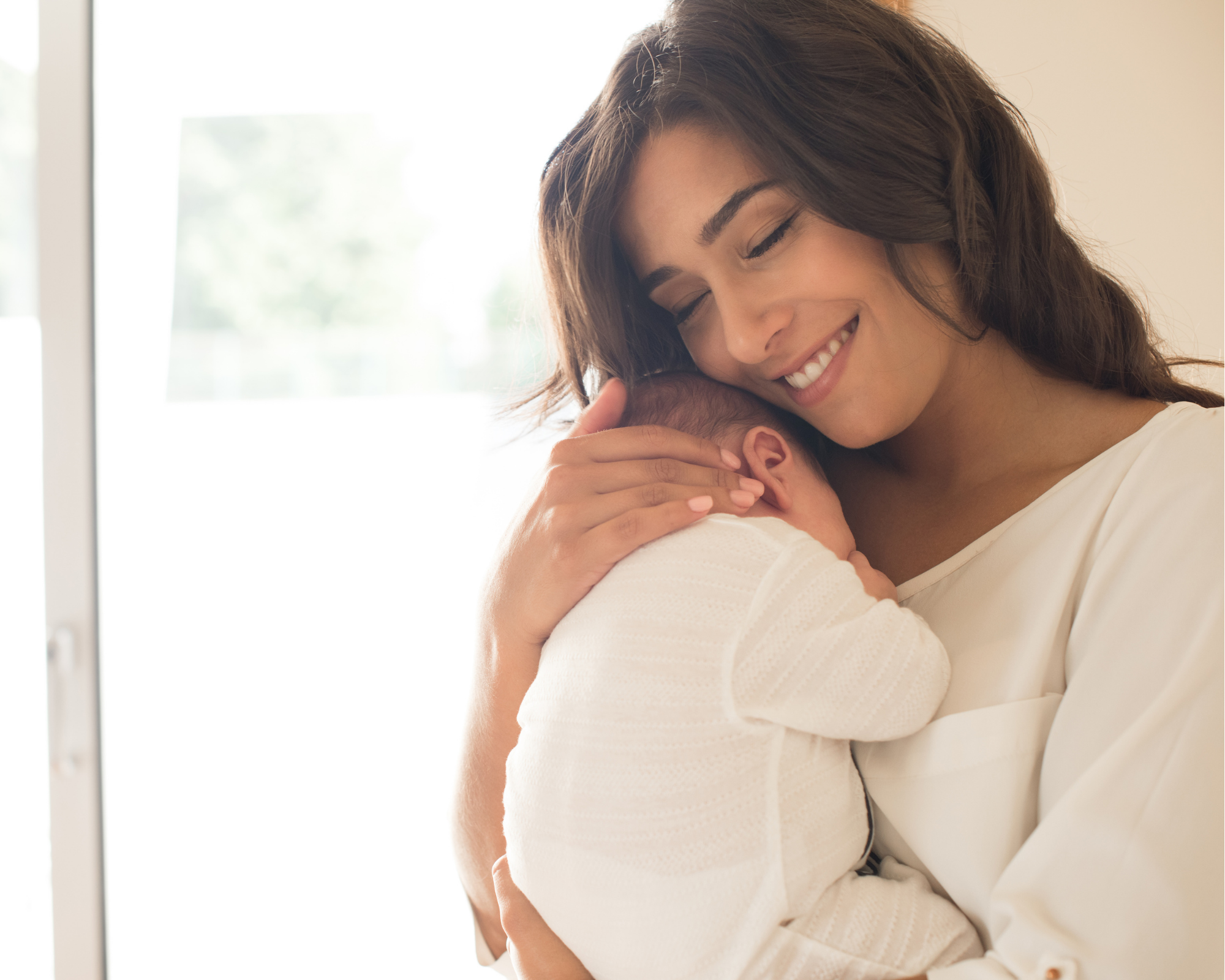Setting Your Newborn Up For Sleep Success
Newborns should come with a manual.
But since they don’t, I’m here to provide you with everything you need to know about newborn sleep including safe sleep space, swaddling, and ideal wake windows. I will then provide you with information on when and how you can start creating healthy sleep habits for your new baby.
Safe Sleep Space
During the day, contact naps are perfectly acceptable.* Newborns also need a lot more assistance to be able to fall asleep and stay asleep, so don’t worry about creating any less than ideal sleep habits for the first 2 months.
During the night it is best to have baby in a safe sleep environment such as a bassinet in a shared room with you, with a fitted sheet, a swaddle, a pacifier (if using), and nothing else.
*when I talk about contact naps I am referring to being held, being in a carrier, etc. For safety reasons, I am not suggesting that you nap alongside your baby.
Swaddle
Swaddling your baby helps to recreate the warm and cozy feeling of your womb and provide some comfort during their transition to the outside world. It can also help settle the Moro Reflex (startle reflex) that can wreak havoc for newborn sleep.
According to the American Academy of Pediatrics, you should remove the swaddle as soon as your baby shows any signs of rolling, or is 8 weeks old, whichever comes first.
You can read more about how to move from a swaddle to a sleep sack here.
Wake Windows
Babies do not develop their natural circadian rhythm until between 4-5 months of age, so prior to this age it is beneficial to work with wake windows for sleep.
The average wake window for a newborn is between 30-45 minutes. I know… it’s so short! But they need a large amount of sleep to help with the massive amount of brain development that’s going on right now.
This means that from the moment your baby wakes, they should be back down for a nap within 30-45 minutes. The best way to approach this wake window is by using the Eat, Play, Sleep schedule detailed here. Luckily, as babies get older their wake windows also extend. By 4 months of age your baby is likely capable of being awake for 90-120 minutes.
Even though we don’t suggest any formal sleep training until babies reach 16 weeks of age (adjusted), there are many different things that you can focus on throughout the first 4 months in order to create healthy sleep habits that they will use for their lifetime.
From Birth - 6/8 Weeks
At this age, sleep is unorganized and has no patterns, and you will notice that your baby has day/night confusion with more sleep happening during the day and more awake time during the night.
Focus On:
Resting, bonding, recovering from childbirth, and establishing a solid feeding routine.
Beginning At 6/8 Weeks
Once your baby shows signs of making connections (ex. smiling in response to something) you can start introducing some healthy sleep habits.
Day/night confusion is coming to an end, and you will notice the longest stretch of sleep naturally start to happen in the later evening/earliest part of the night.
Fussiness may peak at this point, with some babies going through the Purple crying period, detailed here.
Focus On:
Creating a solid sleep environment (white noise and blackout)
Introduce a consistent sleeping space and start practicing crib naps at least once/day
Create a soothing nap/bedtime routine
Experiment with self-soothing:
If they do not fall asleep independently or are obviously struggling it is okay to go in and pick them up. Great effort! You can always try again later! If they do fall asleep but only sleep for a brief period of time you can give them space and see if they will fall back asleep. If they are upset or it is apparent that they are not going to fall asleep again it is okay to go in, pick them up, and try to lengthen the nap by offering a contact nap. And if that is a no go then just move the next nap up slightly.
From 8 Weeks To 16 Weeks
This is when sleep starts to fall into place. Night sleep will become even longer, with bedtime getting earlier. Wake periods will increase slightly, and you will notice naps lengthening and becoming more consistent.
Circadian rhythms begin to develop closer to 16 weeks so it is common to see sleep needs change at this point, which some refer to as the 4 month regression (don’t be afraid!).
Focus On:
Continue using a consistent sleeping space, a solid routine, and working on self-soothing
Introduce and utilize the Eat.Play.Sleep Schedule
Learn your babies sleepy cues so you can ensure you are using the correct wake window (detailed above)
This can be a lot of information and can sometimes be overwhelming for parents. If this is you, my biggest suggestion is to pick one thing and start there! Maybe you focus on creating a bedtime routine and mastering that before moving on to introducing the crib. Remember that this is a time to enjoy your baby, so if this is too much for you to focus on currently, tuck it away and save it for another day!
Is your baby getting close to the 4 month mark? Head over and read all about the upcoming changes to your babies sleep schedule here.

